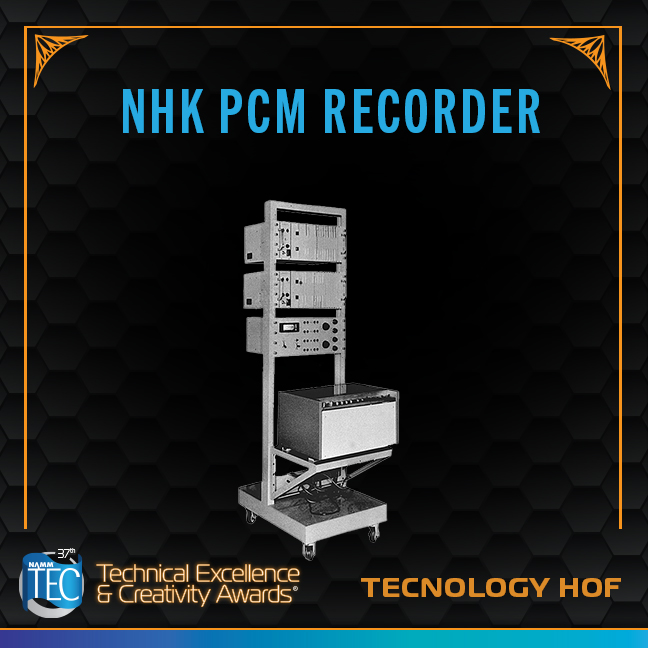Ironically, the first digital tape recorder did not come from an industrial giant like Sony, but from the R&D laboratories of the Technical Research Institute of Japanese public broadcaster NHK (Nippon Hōsō Kyōkai). The project was spearheaded by Dr. Heitaro Nakajima — no stranger to cutting edge product development, having (among other projects), developed the prototype for what became Japan’s first condenser microphone — Sony’s C-37A in 1955. Years later, Nakajima also was instrumental in Sony’s co-development of the compact disc with Phillips Electronics.
Nakajima believed that digital PCM (Pulse Code Modulation) techniques were key to creating recordings that could surpass the existing analog recordings of the time. While crude by modern standards, Nakajima’s 1967 design for the first digital audio recorder was a single-channel system using a 12-bit companded scheme and 30 kHz sampling rate.
This machine was a 12-bit companded scheme (using a compression / expansion of sound to improve dynamic range) with a 30 kHz sampling rate. Audio data was captured from the A/D converters onto a one-inch helical scan VTR that resided in the rack below the record/play electronics. The results weren’t amazing, but proved that the process was workable, and two years later, was followed up by a 13-bit stereo recorder that captured audio at 47.25 kHz onto a 2-inch VTR.
After the news spread of the NHK prototypes, other digital recorder projects were launched by Denon, the BBC, Sony, Hitachi, Mitsubishi and others — both as fixed-head and VTR-based systems. And the rest is history.

